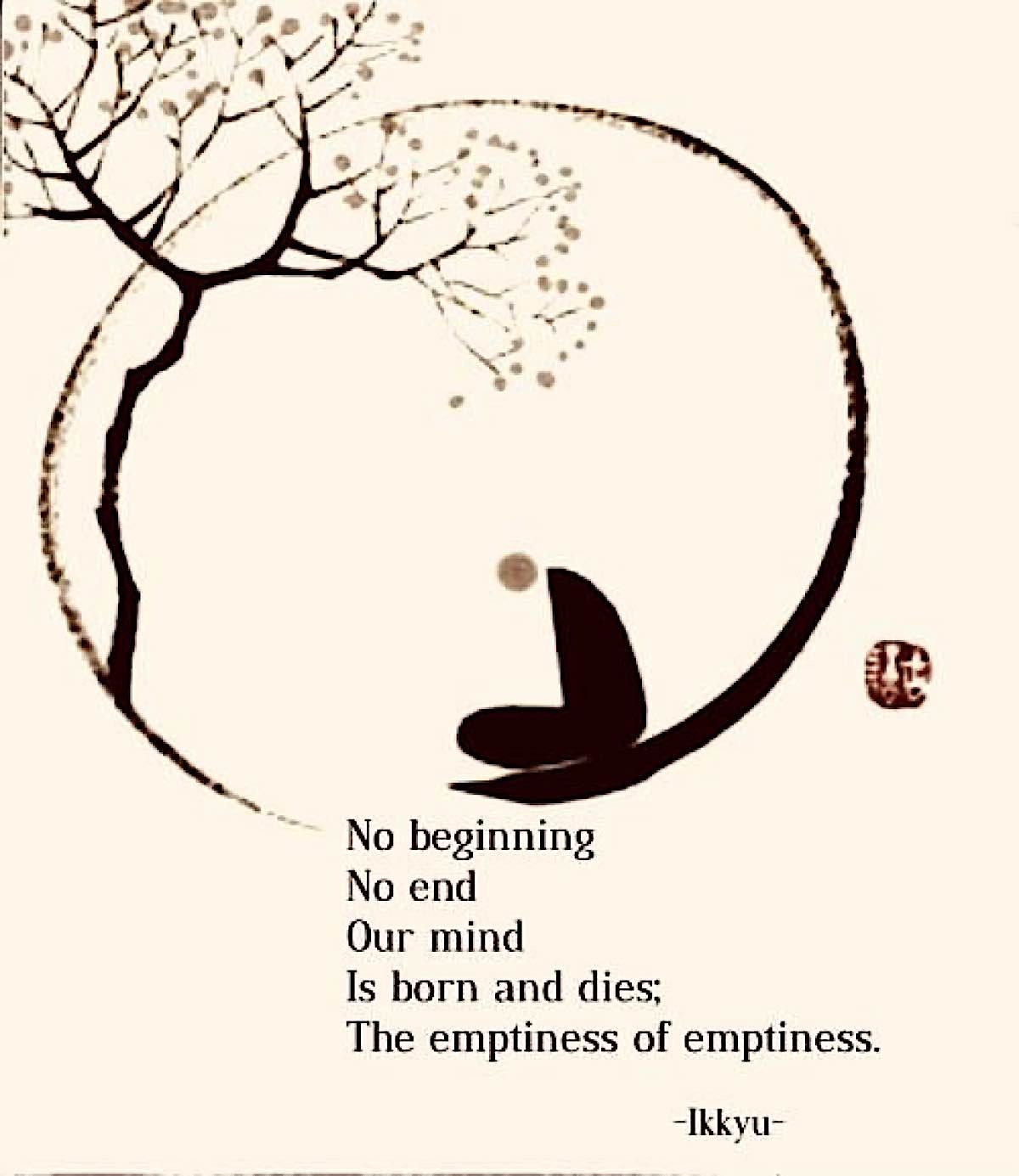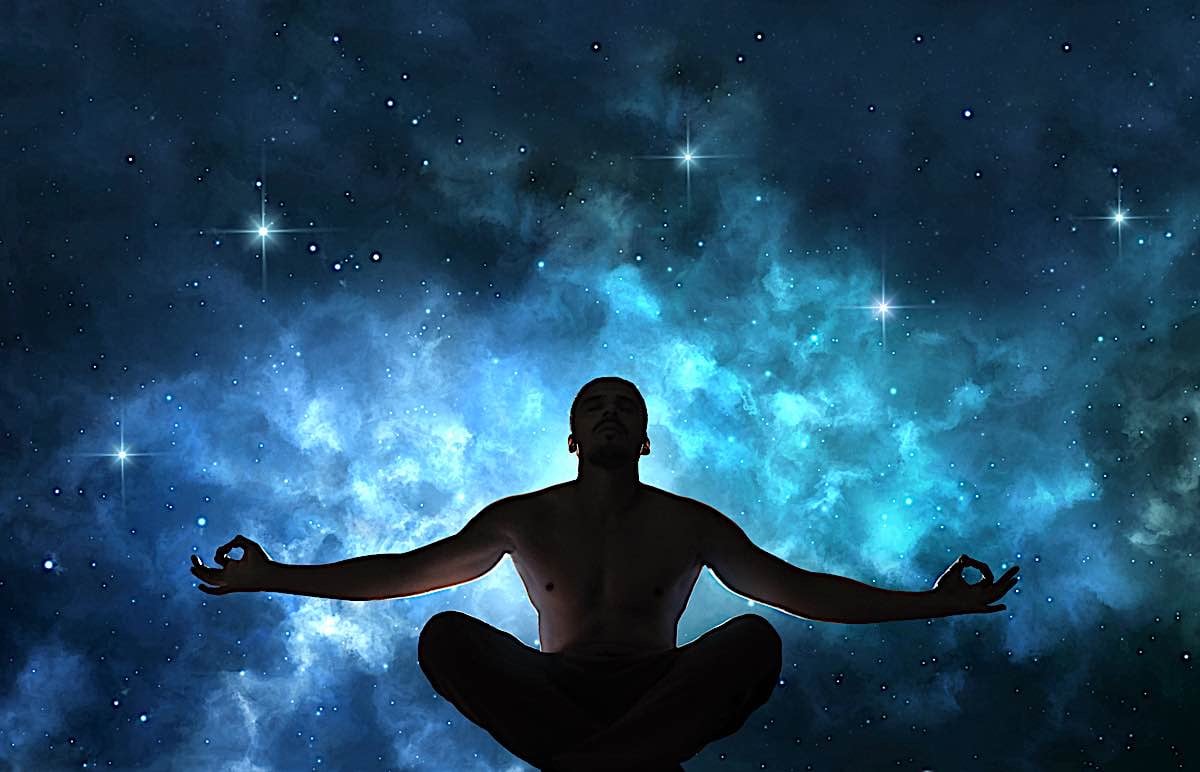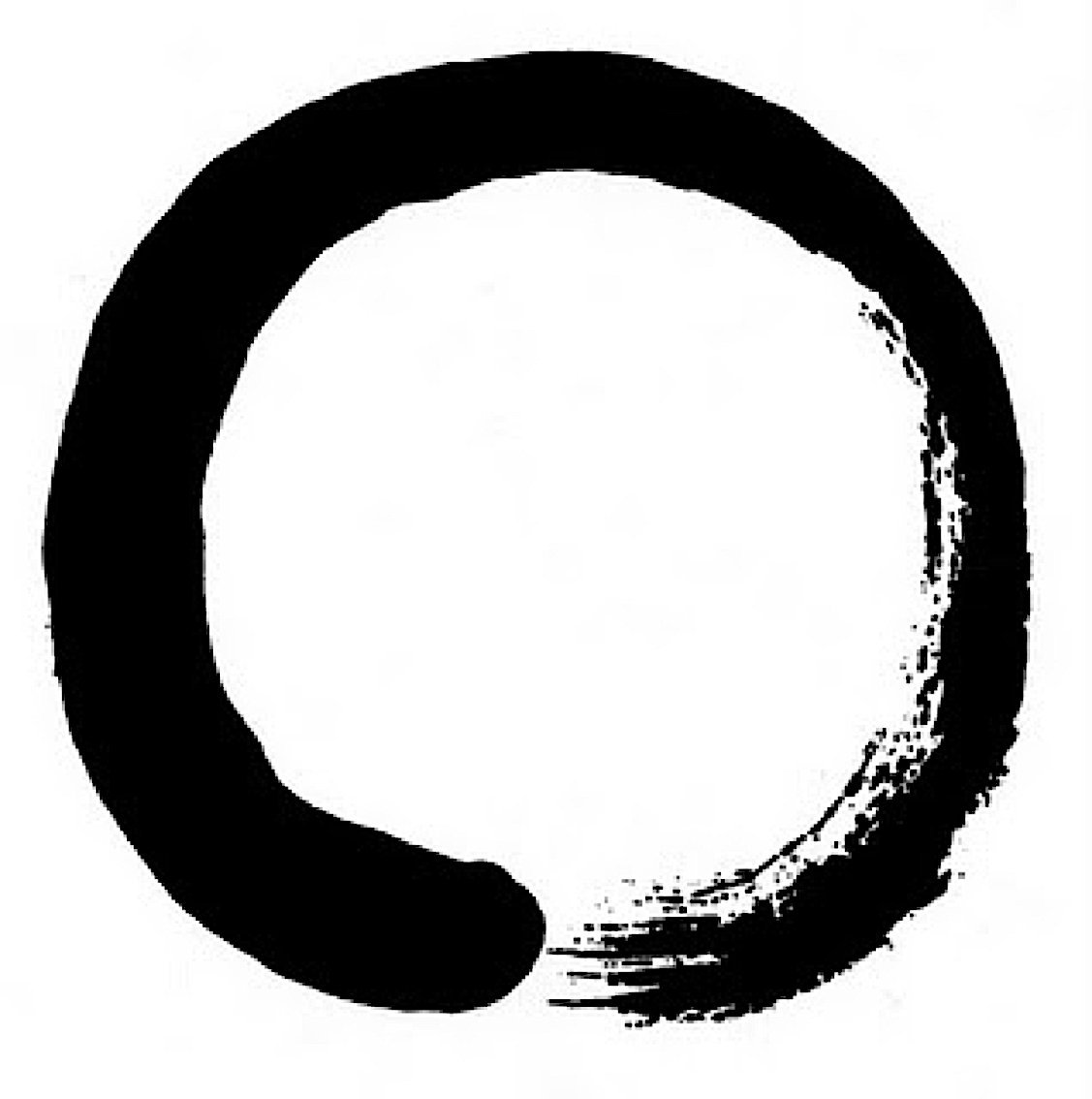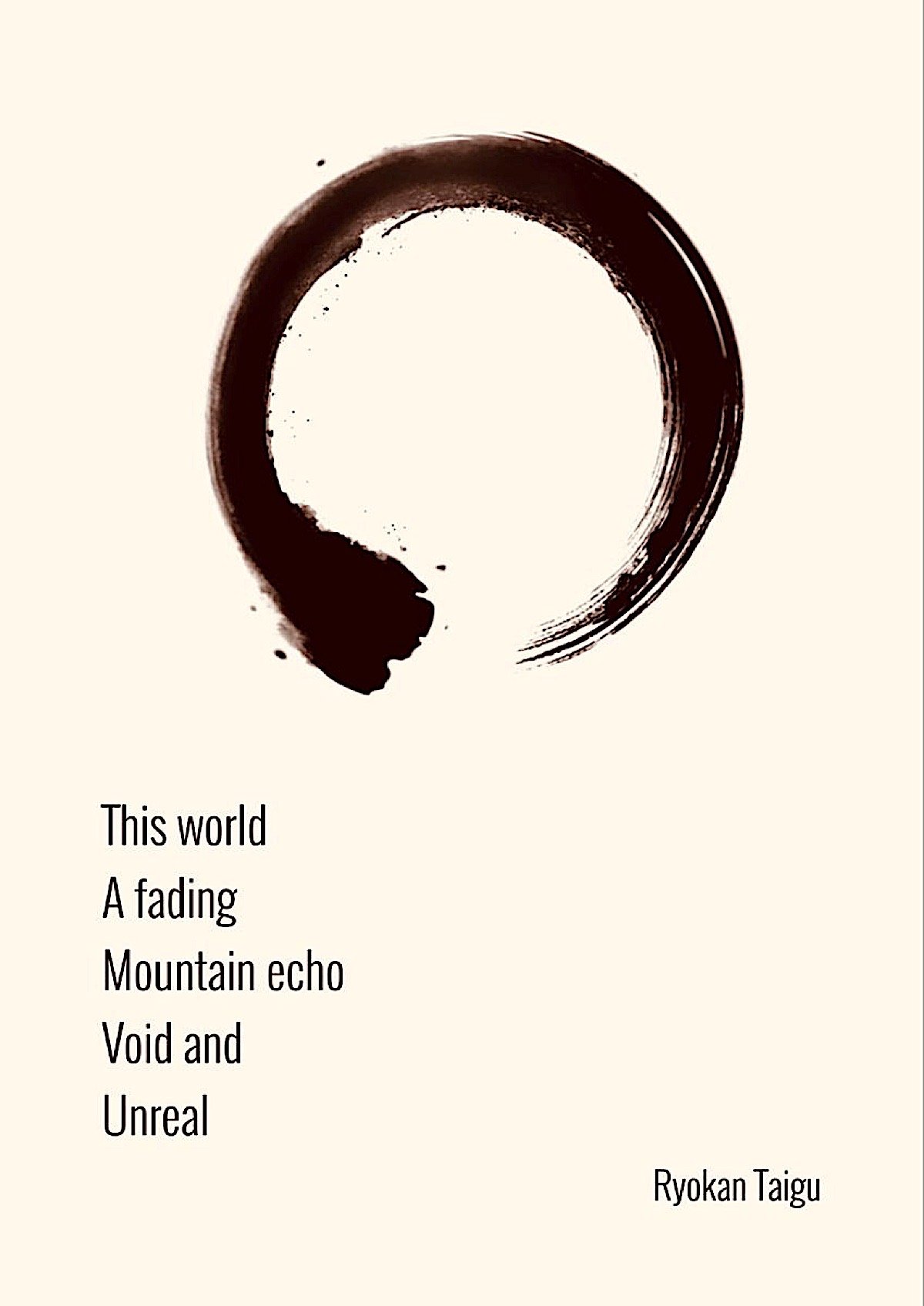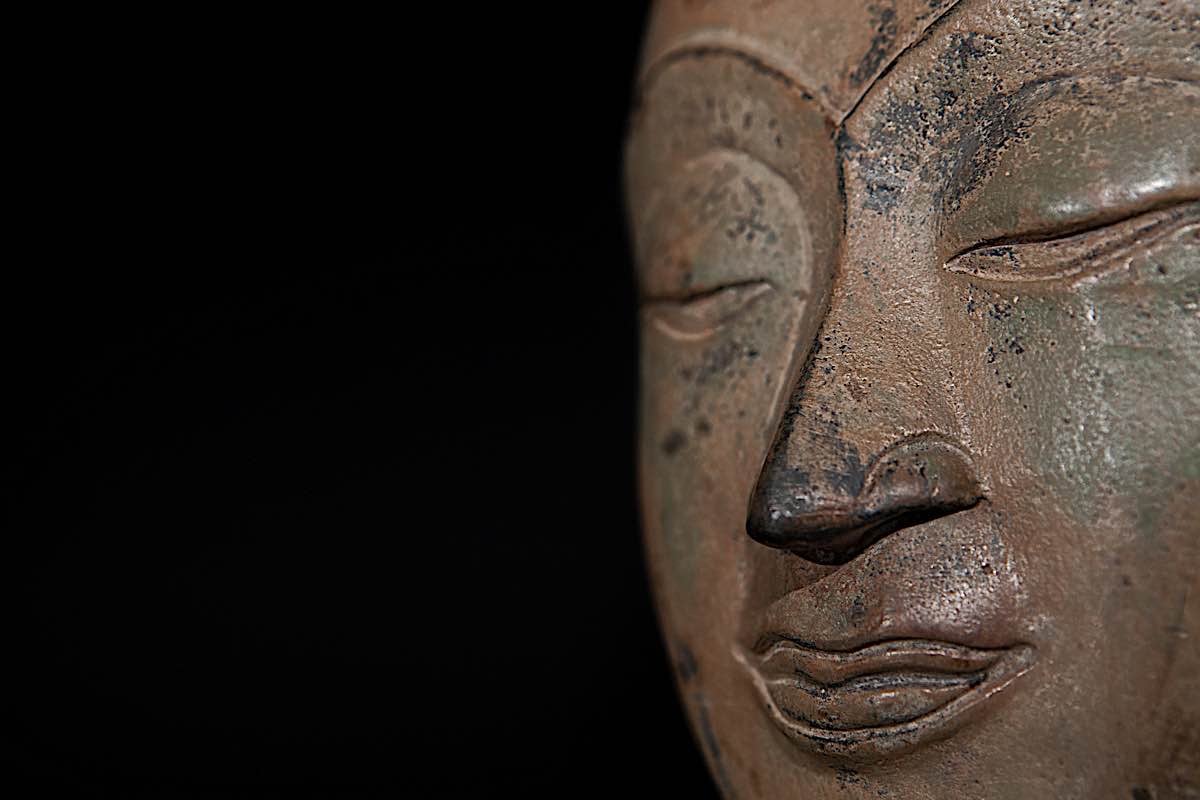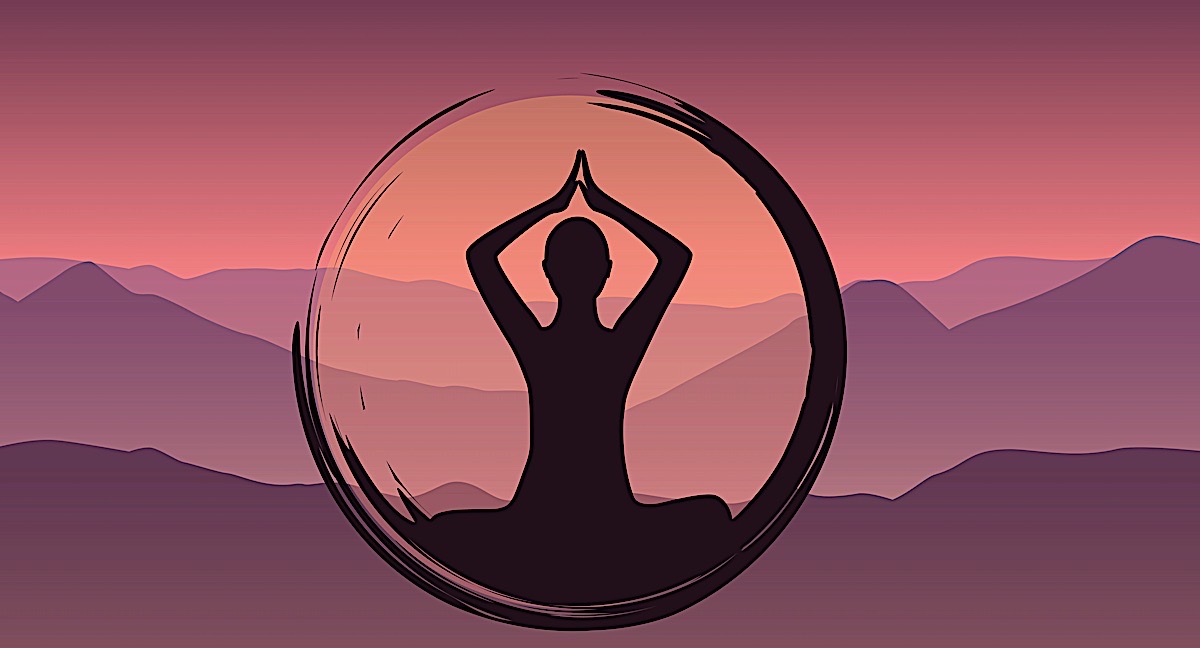[ad_1]
Emptiness, Nothingness or Voidness, as English translations for Shunyata are unfortunate — and entirely misleading.
To paraphrase the Zen master Thich Nhat Hanh: “Emptiness means empty of self — but in the fullness of everything else… it is because of emptiness everything is possible.”
In Zen Buddhism, the Enso symbolizes Emptiness. In a way, this is a perfect symbol of emptiness, as it implies a list of things: zero (which is not nothing), oneness, completeness, everything-ness.
Rather than “Emptiness”, a better English translation might be “Zero-ness.” Zero does not mean nothing in mathematics, science, or architecture — it transcends all numbers. As Annette van der Hoek, PhD wrote[1]:
“The zero, a symbol we all use in daily life, is an unrivaled innovation. It has revolutionized the face of science and technology all over the world.”
For instance, an architect begins with “zero” or empty space. Archtiects “frame” space. Empty space, is not nothing. It is everything until the architect begins to pencil in the lines, which conceptualize and form.
So — is “Zero-ness” a better translation of Shunyata than “Emptiness?” Perhaps, especially given the wider connotations of “zero.” It is, perhaps, not by accident that the famous symbol in Zen for Shunyata looks like a beautiful brush-stroke “zero.”
Ikkyu — enough said?
Oneness, not Emptiness?
(Sanskrit Śūnyatā (Dev: शून्यता), Pali Suññatā) “Oneness” might be a better one-word stand-in, but suffers a similar failing — incomplete and misleading as a translation of Shunyata.
“Openess” and “Thusness” are often used as well, with similar shortcomings.
Mind is the most sacred space in Buddhism. It is in our minds that we meet the Buddha, Dharma and Sangha. It is through the experience of meditation that we touch Shunyata — which has more to do with “Everything-ness” than “Nothing-ness”
Among the worst “one word” substitutions are “voidness” and “vacuity” with their incorrect Nihilistic associations. Buddhism has nothing whatsoever to do with Nihilism.
Shunyata is, first and foremost, an experience. It cannot be adequately conveyed through words or mental concepts — no matter how accurate or well-intentioned those words or concepts might be.
The direct experience of Shunyata is the heart of Buddhism, and the key to its effectiveness as a path to Enlightenment.
This is why, in Zen or Chan, teachers often challenge us with unsolvable riddles or mysterious koans. This is to allow us to experience our own definitions.
In the different tradition of Vajrayana, “bliss” is brought into the experience of Shunyata. Why bliss? Because it emphasizes that Shunyata must be experienced.
One concept in Buddhism is Shunyata, various described as Emptiness or Oneness. When the ego is removed, there is oneness. When the ego is introduced, phenomenon arise from the observer (with the ego).
Direct Experience is the Key
The direct experience of Shunyata is also the key to understanding why “Emptiness” and “Nothingness” are such poor translations for the concept. Buddhism does not teach that everything is “empty” or that reality is ultimately “nothing.” To do so would be to fall into the trap of Nihilism, which is exactly what Buddhism seeks to avoid.
Interconnected and Interdependent
Instead, Buddhism teaches that everything is connected and interdependent. [For a feature on Interdependence, co-dependent arising and dependent arising, see>>]
This means that nothing exists in isolation; everything is connected to everything else. In this sense, “emptiness” is a more accurate translation for Shunyata than “nothingness.”
In Zen buddhism, the Enso, symbolizes Shunyata. In a way, this is a perfect symbol of Shunyata emptiness, as it implies a lit of things: oneness, completeness rather than nothingness.
Shunyata, in fact, encapsulates a vast Buddhist concept that is discussed across more than a hundred thousand words in Sutra; it certainly cannot be distilled down to one word in English or any other language. Great Buddhist teachers today still write entire books on Shunyata, no doubt in part because it is such a difficult concept to grasp — even for those who have experienced it firsthand.
Say No to Nothingness
So when you hear someone say that Buddhism is “nothing” or “empty,” know that they are not only misrepresenting the Dharma but also missing out on its most central and important teaching. Buddhism is about experiencing interconnectedness. One word is insufficient to the task of defining “Shunyata”.
It is for this reason, in Sutra translations, many experts suggest we not translate Shunyata as one word. Better, perhaps, to leave the word untranslated.
Heart Sutra — Form is … what?
“Emptiness there is no form, no feeling, no discrimination, no compositional factors, no consciousness; no eye, no ear, no nose, no tongue, no body, no mind; no visual form, no sound, no odor, no taste, no object of touch, and no phenomenon…”
For example, the most famous line from Heart Sutra is often translated as:
“Form is emptiness; emptiness is form.”
A more accurate, and certainly more helpful translation might be:
“Form does not exist independently — it arises in dependence upon causes and conditions. Emptiness does not exist independently — it arises in dependence upon causes and conditions.”
Clearly, less poetic, and still not complete, but more accurate? Maybe, but insufficient to the task.
It’s easier to say what Shunyata is not. It is NOT Nothingness.
Buddhism has nothing to do with Nothingness.
Often, as a starting conceptualization, students are guided to think of Emptiness as “space” or spacious. This is generally, not the ideal conceptualization. To avoid nihilistic attitudes, many teachers now coach students to think in terms of “oneness” and “fullness” — union with all, rather than removal of all. Both of these concepts are beginner visualizations. Cultivating bliss, with emptiness, a speciality of Vajrayana, helps us develop our own insights into the true nature of reality and Emptiness.
Often, as a starting conceptualization, students are guided to think of Emptiness as “space” or spacious. This is generally, not the ideal conceptualization. To avoid nihilistic attitudes, many teachers now coach students to think in terms of “oneness” and “fullness” — union with all, rather than removal of all. Both of these concepts are beginner visualizations. Cultivating bliss, with emptiness, a speciality of Vajrayana, helps us develop our own insights into the true nature of reality and Emptiness.
“Form is emptiness; emptiness is form.”
This famously concise translation of the Heart Sutra is poetic, and memorable, but is it accurate?
It may be poetic, and lovely, but it leads many people to incorrectly describe Mahayana Buddhism as nihilism.
Equally, you could translate this as:
- Form is Oneness; Oneness is form
- Form is Voidness; Voidness is form
- Form is Openness; Openess is form.
Better, perhaps, was the translation “Form is Thusness; Thusness is Form” which in modern language might be:
- Form is “As it is-ness”; “As-it-is-ness” is form.
Many Zen masters tend to favor “As it is-ness.” It does come closest in a short phrase to the essence. Thich Nhat Hanh wrote extensively on Emptiness, especially trying to correct the error of Nihilism:
“Emptiness of self only means the emptiness of self, not the non-being of self, just as a balloon that is empty inside does not mean that the balloon does not exist. The same is true with the emptiness of dharma: it only means the emptiness of all phenomena and not the non-existence of phenomena. It is like a flower that is made only of non-flower elements. The flower is empty of a separate existence, but that doesn’t mean that the flower is not there.”
The problem with any translation
But, Buddhism is not about “As it is-ness” or any other single mental concept we might try to use to define it.
Buddhism — and Shunyata in particular — is an experience. And like all experiences, it cannot be adequately conveyed through words or mental concepts. The direct experience of Shunyata is the heart of Buddhism and the key to its effectiveness as a path to Enlightenment.
So if you really want to understand Shunyata, don’t ask me or anyone else to explain it to you in words — other than as the initial, necessary “pointing out” instructions.
Go out and experience it for yourself. It just might change your life.
Where can we find the Buddha? Buddha can be found in our own mindspace as we meditate on Buddha, Dharma and Sangha. From the feature “Where can we find the Buddha?” The Buddha, our mind, and everything are all part of Shunyata, or One-ness or Zero-ness, but not Nothingness.
Where can we find the Buddha? Buddha can be found in our own mindspace as we meditate on Buddha, Dharma and Sangha. From the feature “Where can we find the Buddha?” The Buddha, our mind, and everything are all part of Shunyata, or One-ness or Zero-ness, but not Nothingness.
Translations can be misleading
Translations can be inelegant. For example, if we take the Sanskrit Avalokiteshvara and attempt to translate it into English — as is often attempted in the Lotus Sutra, for example — you end up with a clumsy (almost incomprehensible) mess. Instead of
“Avalokiteshvara stood up and bared his shoulder…”
You end up with
“He Who Hears the Cries of the World Bodhisattva stood up and bared his shoulder.”
It’s possible to understand the meaning of such a translation, but it is hardly elegant — or poetic.
A better approach might be:
“The Bodhisattva of Compassion stood up and bared his shoulder.”
This is still not perfect, but it gets closer to the mark. Better — just leave the name alone. Avalokiteshvara remains Avalokiteshvara — just as Shunyata should remain Shunyata (instead of Emptiness, Oneness, Fullness, As-it-is-ness, et al.)
Buddha taught us methods that help us explore the true nature of reality. At the ultimate level is Shunyata — or “Everything-ness”
Finally — What about Buddhism?
And finally, the word “Buddha” and its inevitable “ism”: Buddhism. We don’t translate that, do we? Still, there are those who say Buddhism is…
Buddhism is not a religion.
Buddhism is a science.
Buddhism is a philosophy.
All of these statements are partially true, and yet — in the final analysis — Buddhism is none of these things.
Buddhism is an experience. As is Shunyata. “As it is.”
Ultimately, Shunyata can only be experienced through meditation. It has more to do with “Oneness” and “Fullness” than “Emptiness” and “Nothingness.” Empty of ego, but full of everything else.
Appendix: Other Languages
Other languages are likewise not able to convey the nuances of Shunyata:
Chinese: 空; (Pinyin: Kōng)
Japanese: 空; (Rōmaji: Kū)
Korean: 공성(空性); (RR: gong-seong)
Burmese: thone nya ta, သုညတ
Khmer: សុញ្ញតា; (UNGEGN: Sŏnhnhôta)
Pali: Suññatā; (Dev: सुञ्ञता)
NOTES
[ad_2]
Source link
